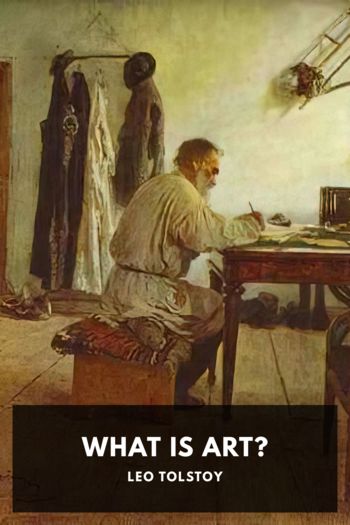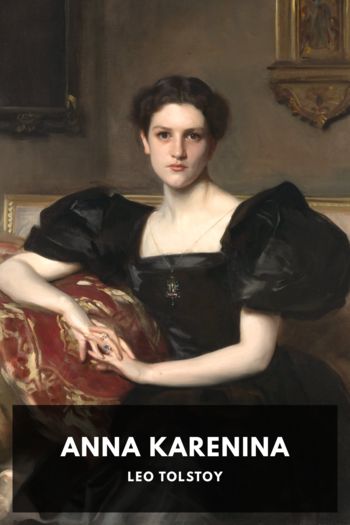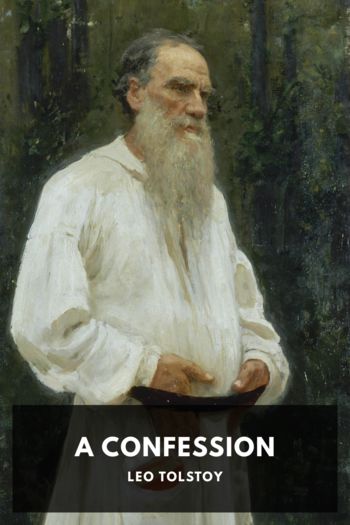What Is Art? by Leo Tolstoy (english readers .txt) 📕

- Author: Leo Tolstoy
Book online «What Is Art? by Leo Tolstoy (english readers .txt) 📕». Author Leo Tolstoy
What I am saying will be considered irrational paradox, at which one can only be amazed; but for all that I must say what I think, namely, that people of our circle, of whom some compose verses, stories, novels, operas, symphonies, and sonatas, paint all kinds of pictures and make statues, while others hear and look at these things, and again others appraise and criticise it all, discuss, condemn, triumph, and raise monuments to one another generation after generation—that all these people, with very few exceptions, artists, and public, and critics, have never (except in childhood and earliest youth, before hearing any discussions on art), experienced that simple feeling familiar to the plainest man and even to a child, that sense of infection with another’s feeling—compelling us to joy in another’s gladness, to sorrow at another’s grief, and to mingle souls with another—which is the very essence of art. And therefore these people not only cannot distinguish true works of art from counterfeits, but continually mistake for real art the worst and most artificial, while they do not even perceive works of real art, because the counterfeits are always more ornate, while true art is modest.
XVArt, in our society, has been so perverted that not only has bad art come to be considered good, but even the very perception of what art really is has been lost. In order to be able to speak about the art of our society, it is, therefore, first of all necessary to distinguish art from counterfeit art.
There is one indubitable indication distinguishing real art from its counterfeit, namely, the infectiousness of art. If a man, without exercising effort and without altering his standpoint, on reading, hearing, or seeing another man’s work, experiences a mental condition which unites him with that man and with other people who also partake of that work of art, then the object evoking that condition is a work of art. And however poetical, realistic, effectful, or interesting a work may be, it is not a work of art if it does not evoke that feeling (quite distinct from all other feelings) of joy, and of spiritual union with another (the author) and with others (those who are also infected by it).
It is true that this indication is an internal one, and that there are people who have forgotten what the action of real art is, who expect something else from art (in our society the great majority are in this state), and that therefore such people may mistake for this aesthetic feeling the feeling of divertisement and a certain excitement which they receive from counterfeits of art. But though it is impossible to undeceive these people, just as it is impossible to convince a man suffering from “Daltonism” that green is not red, yet, for all that, this indication remains perfectly definite to those whose feeling for art is neither perverted nor atrophied, and it clearly distinguishes the feeling produced by art from all other feelings.
The chief peculiarity of this feeling is that the receiver of a true artistic impression is so united to the artist that he feels as if the work were his own and not someone else’s—as if what it expresses were just what he had long been wishing to express. A real work of art destroys, in the consciousness of the receiver, the separation between himself and the artist, nor that alone, but also between himself and all whose minds receive this work of art. In this freeing of our personality from its separation and isolation, in this uniting of it with others, lies the chief characteristic and the great attractive force of art.
If a man is infected by the author’s condition of soul, if he feels this emotion and this union with others, then the object which has effected this is art; but if there be no such infection, if there be not this union with the author and with others who are moved by the same work—then it is not art. And not only is infection a sure sign of art, but the degree of infectiousness is also the sole measure of excellence in art.
The stronger the infection the better is the art, as art, speaking now apart from its subject-matter, i.e. not considering the quality of the feelings it transmits.
And the degree of the infectiousness of art depends on three conditions:—
(1) On the greater or lesser individuality of the feeling transmitted; (2) on the greater or lesser clearness with which the feeling is transmitted; (3) on the sincerity of the artist, i.e. on the greater or lesser force with which the artist himself feels the emotion he transmits.
The more individual the feeling transmitted the more strongly does it act on the receiver; the more individual the state of soul into which he is transferred the more pleasure does the receiver obtain, and therefore the more readily and strongly does he join in it.
The clearness of expression assists infection, because the receiver, who mingles in consciousness with the author, is the better satisfied the more clearly the feeling is transmitted, which, as it seems to him, he has long known and felt, and for which he has only now found expression.
But most of all is the degree of infectiousness of art increased by the degree of sincerity in the artist. As soon as the spectator, hearer, or reader feels that the artist is infected by his own production, and writes, sings,





Comments (0)